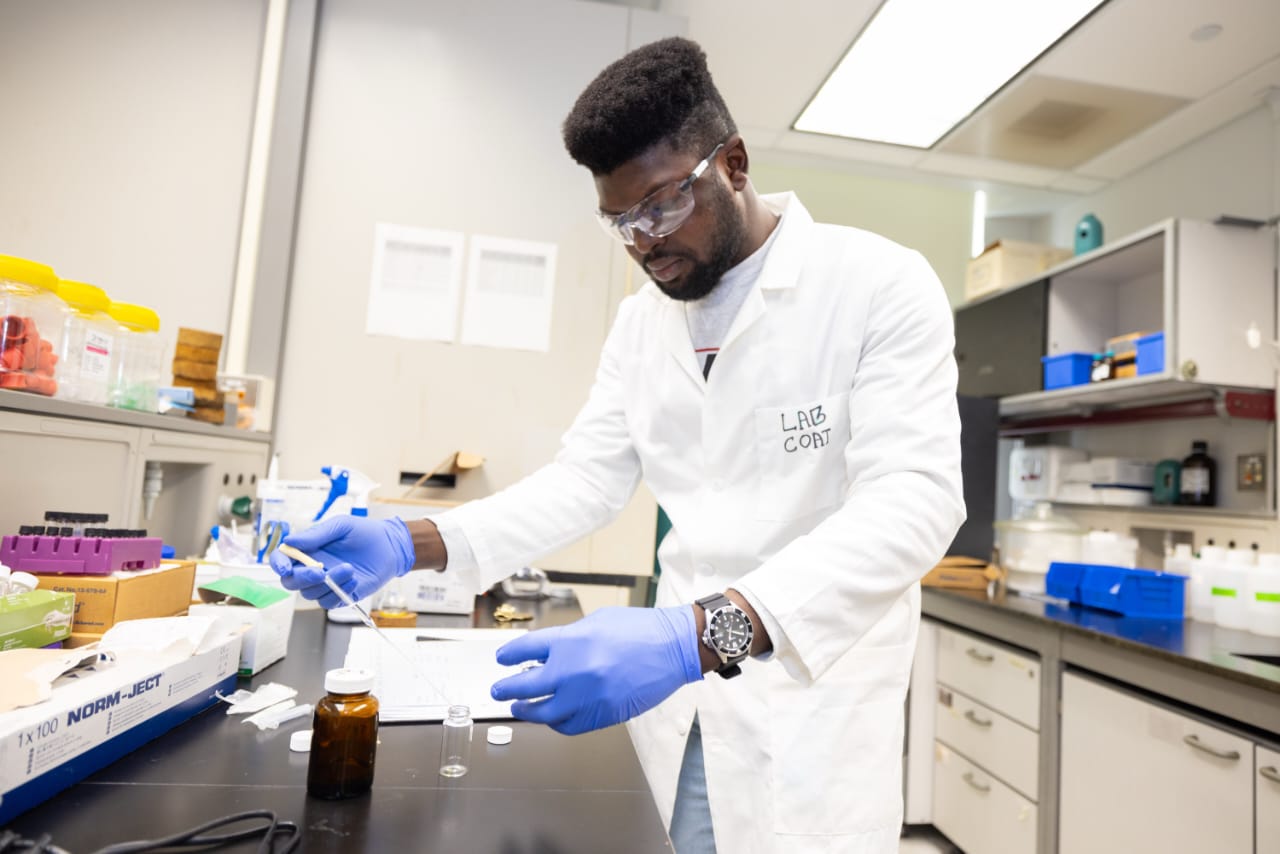In an era where plastic waste continues to threaten the environment, Obed Dodo, a Doctoral Research Scientist at Miami University is pioneering an innovative solution.
His research on self-healing and reprocess-able polymers aims to redefine the lifecycle of plastics, reducing waste and promoting a circular economy.
With plastic production reaching nearly 400 million tons annually, much of it ending up in landfills and oceans, the world is grappling with a severe environmental crisis.
However, Dodo believes that the key to solving this problem lies in chemistry. “The future of materials is one where we no longer think of plastic as a single-use item,” he said. “We’re creating materials that can evolve, adapt, and last longer.”
Unlike conventional plastics that remain in the environment for centuries, Dodo’s self-healing polymers have the ability to repair themselves after damage. This is made possible by dynamic chemical reactions that restore the integrity of the material. “Imagine a plastic that, when scratched or broken, can heal itself just like human skin,” he explained. “That’s the future we are working towards.”
Beyond self-repairing plastics, Dodo’s research also focuses on reprocess-able materials—plastics that can be repeatedly broken down and reshaped without degrading in quality. This innovation could significantly cut down the need for new plastic production. “If we can give plastics multiple life cycles, we reduce our dependence on virgin materials and slow down environmental degradation,” he noted.
His work has far-reaching implications for multiple industries, including automotive, electronics, and construction. A self-healing car tire, for instance, could prevent frequent replacements, while scratch-resistant coatings could extend the lifespan of products. “These materials can revolutionize manufacturing, reducing costs and maintenance needs,” Dodo said.
His groundbreaking research aligns with global sustainability goals aimed at reducing plastic pollution. By promoting materials that can be reused and reprocessed, Dodo’s work challenges the traditional “take, make, dispose” model. “We need to rethink how we use plastics,” he said.
“The goal is to design materials that stay in circulation, rather than becoming waste.”
Despite the challenges of developing self-healing polymers, Dodo remains optimistic about their potential. He acknowledges that large-scale implementation will require collaboration across industries and continued scientific breakthroughs. “We are still in the early stages, but every step we take brings us closer to a world with less plastic waste,” he emphasized.
As concerns over environmental sustainability continue to grow, innovations like self-healing plastics could be a game-changer.
Dodo’s research offers not just a technological breakthrough but a vision for a future where materials are built to last, reducing their impact on the planet.
His work serves as a beacon of hope in the fight against plastic pollution. If widely adopted, self-healing and reprocess-able polymers could mark a turning point in how the world approaches material science—ushering in a new era of sustainability.






